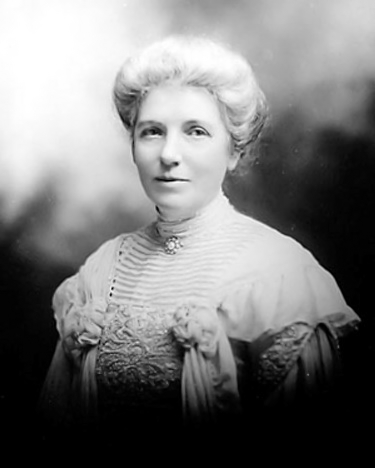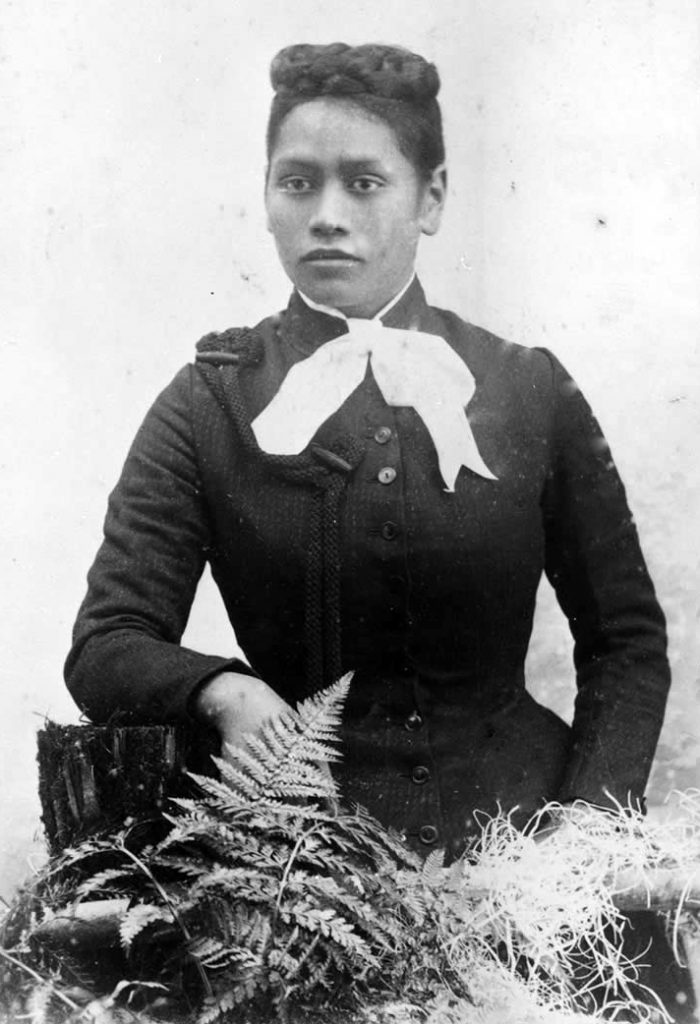TBT: Super Awesome People™ in History.
In grade school, I was surprised to learn that the United States wasn’t the first country where women won the right to vote. American women may have beaten Great Britain’s to the polls by 8 years, but it was the women of New Zealand who achieved universal voting rights before the end of the 19th century.
On September 19, 1893, New Zealand’s suffragettes won the right to vote. It took another 27 years before suffragettes in the U.S. achieved the same goal in 1920—and even then, the vote was denied to many Black Americans for decades longer.

Mary Ann Müller, New Zealand teacher, suffragist, and feminist. 
Kate Sheppard, social reformer, suffragist, and the first president of the National Council of Women of New Zealand. 
Meri Te Tai Mangakāhia, Māori suffragist in New Zealand.
“[Woman Suffrage] has undergone the treatment usually accorded to great reforms, which appeal to the principles of justice and equity, rather than to self-interest. At first contemptuously brushed aside as an ill-timed joke, then treated with gentle and good-humoured banter, it passed through an ordeal of biting sarcasm and ridicule, and finally, as increasing numbers of men woke to the sense of justice of the movement, encountered fierce opposition, gross misrepresentation, and despicable trickery. Ridicule and insult have been freely heaped upon the women who dared to ask to be counted as citizens[…] But though we may feel cast down for the moment, we are sure that the reaction will come. We have suffered numerous defeats, but each battle lost has given us a larger army.”
Kate Sheppard (Hope Deferred—The Prohibitionist WCTU 22 October 1892)
On July 28, 1893, New Zealand suffragists submitted their 1893 Women’s Suffrage Petition to Parliament. It was the third petition in support of women’s suffrage (following petitions in 1891 and 1892) and (along with 12 smaller petitions) contained 31,872 signatures that represented about a quarter of New Zealand’s European female population over the age of 21. With 500 pages of signatures, it was the largest petition submitted to Parliament at the time. Less than two months later, Parliament passed the Electoral Act of 1893 by a vote of 20 to 18 in favor of universal women’s suffrage.
Like their counterparts in the United States and Great Britain, New Zealand’s suffragettes fought for decades to win their voting rights. Mary Ann Müller, New Zealand’s “pioneer suffragist“, began advocating for women’s rights in the 1860s while writing under the pseudonym Fémmina (she kept her identity secret due to her husband’s opposing views). In 1869, she wrote New Zealand’s first published pamphlet on women’s suffrage, “An Appeal to the Men of New Zealand“, where she argued that women should not be discriminated against on the basis of their sex and that they could not fully contribute to national progress until they had political rights.
“I do but ask for my sex a calm unprejudiced consideration of their condition. I feel that our claim will be granted, that the time is coming, but the hours are passing, ‘Periunt et imputantur’, and my whole soul yearns to see it ‘before I go hence’. The change is coming, but why is New Zealand only to follow? Why not take the initiative? She has but to inaugurate this new position, all will applaud. ‘One touch of nature makes the whole world kin.’ It will be the spark to the train now laid in most civilised countries.”
Mary Ann Müller, writing as “Fémmina” (“An Appeal to the Men of New Zealand“)
As early as 1878, bills and amendments supporting women’s suffrage narrowly failed to pass in Parliament. Many suffragettes and their supporters believed that women could have a moralizing effect on politics and lead to social reforms such as the prohibition of alcohol and the promotion of Christianity. Others were fighting for women’s full equality in the eyes of the law, with demands that extended to equal pay and equal education. Fears over women’s influence in the public sphere led groups like the liquor industry to oppose suffrage, but when it was finally won, both the Liberal and Conservative parties claimed credit in order to sway women voters to their sides in the pending 1893 general election.
One of the primary activists behind the suffrage petitions to Parliament was Kate Sheppard, a social reformer who was an active member of the Women’s Christian Temperance Union (WCTU) and the first president of the National Council of Women of New Zealand which was founded in 1896. Sheppard wrote letters to the press and organized meetings and petitions on behalf of the women’s suffrage movement and was the editor of the WCTU’s The White Ribbon, New Zealand’s first woman-operated newspaper. In recognition of her tireless efforts to achieve universal suffrage, Sheppard was featured on the Series 7 NZ$10 bank note, first issued in 2015.
Although New Zealand women won the right to vote in 1893, they weren’t eligible to serve in the House of Representatives until 1919. The first female Member of Parliament (Elizabeth McCombs) was finally elected in 1933, although women are still under-represented in Parliament to this day. Three women have served as Prime Minister of New Zealand—Dame Jenny shipley (served 1997-1999), Helen Clark (1999-2008), and Jacinda Ardern (2017- ). New Zealand women of Māori descent have still not achieved the representation levels of their European counterparts. For years, the efforts of Māori suffragists like Meri Te Tai Mangakāhia (the first woman to address the Kotahitanga Parliament) also went unacknowledged or were lost to history.
“There have been many male leaders who have petitioned the Queen concerning the many issues that affect us all, however, we have not yet been adequately compensated according to those petitions. Therefore I pray to this gathering that women members be appointed. Perhaps by this course of action we may be satisfied concerning the many issues affecting us and our land. Perhaps the Queen may listen to the petitions if they are presented by her Māori sisters, since she is a woman as well.”
Meri Te Tai Mangakāhia (addressing the Kotahitanga Parliament in Hawke’s Bay, 1893)
Read More About the History of Women’s Suffrage in New Zealand
- Give Kate a Voice (Noted/Vanishing Point Studio)
- Women and the Vote (New Zealand History)
- Why New Zealand Was the First Country Where Women Won the Right to Vote (The Conversation)
- New Zealand Suffrage Milestones (New Zealand History)
- Müller, Mary Anne (1820-1901) (The Encyclopedia of New Zealand)
- “An Appeal to the Men of New Zealand”, by Fémmina (New Zealand History)
- Kate Sheppard (1847-1934) (Give Kate a Voice)
- Meri Mangakāhia (New Zealand History)
- The 19th-Century Women’s Movement (The Encyclopedia of New Zealand)